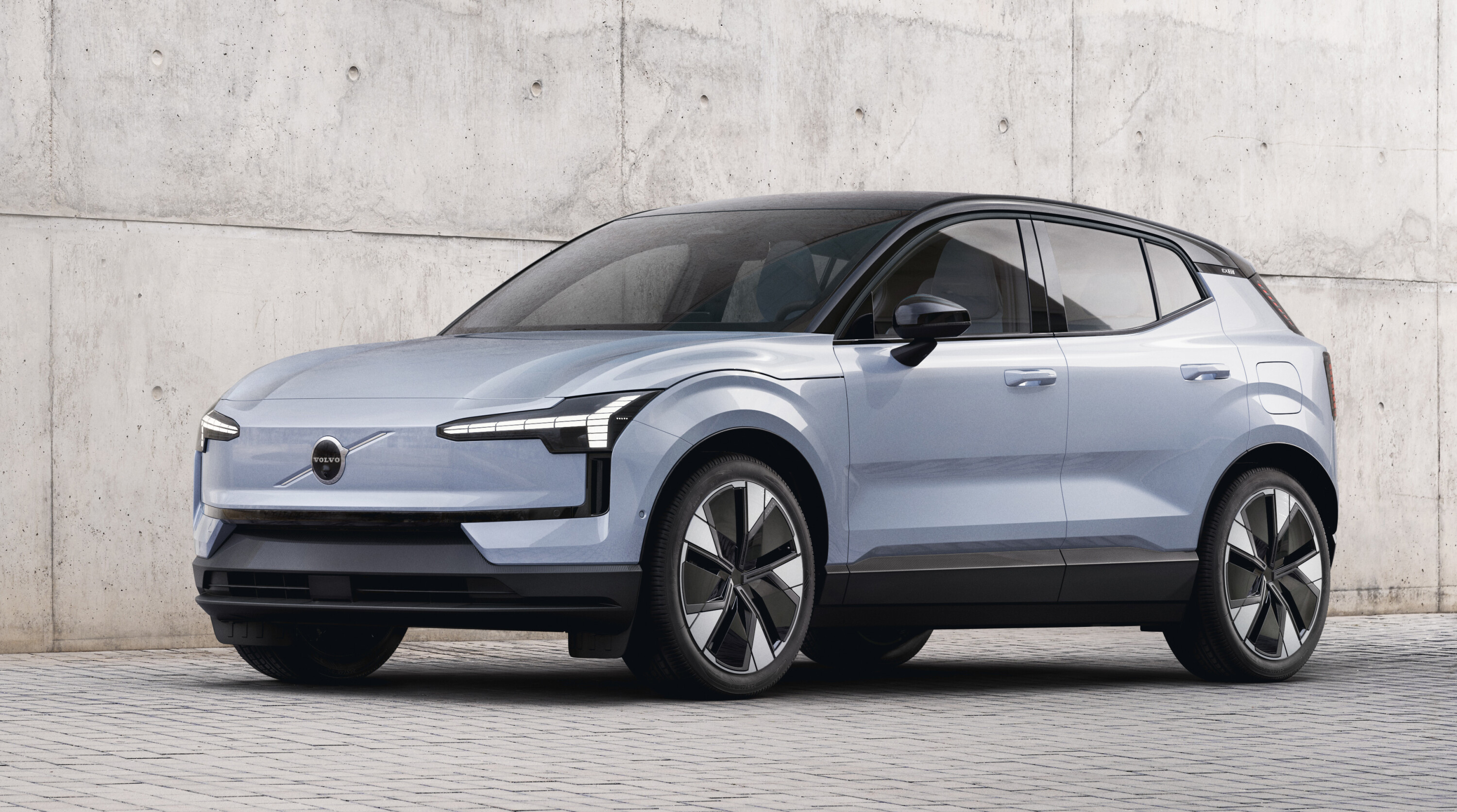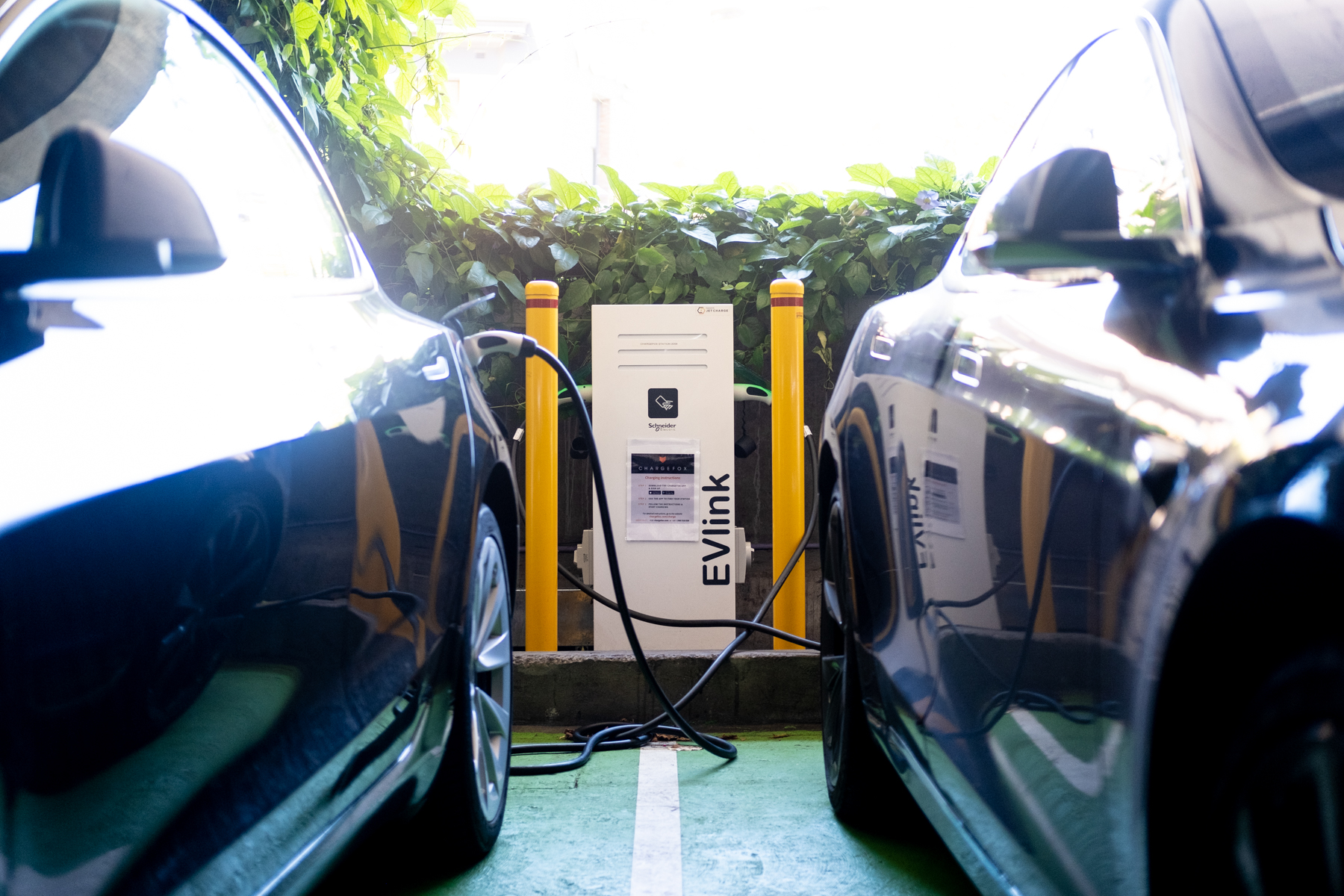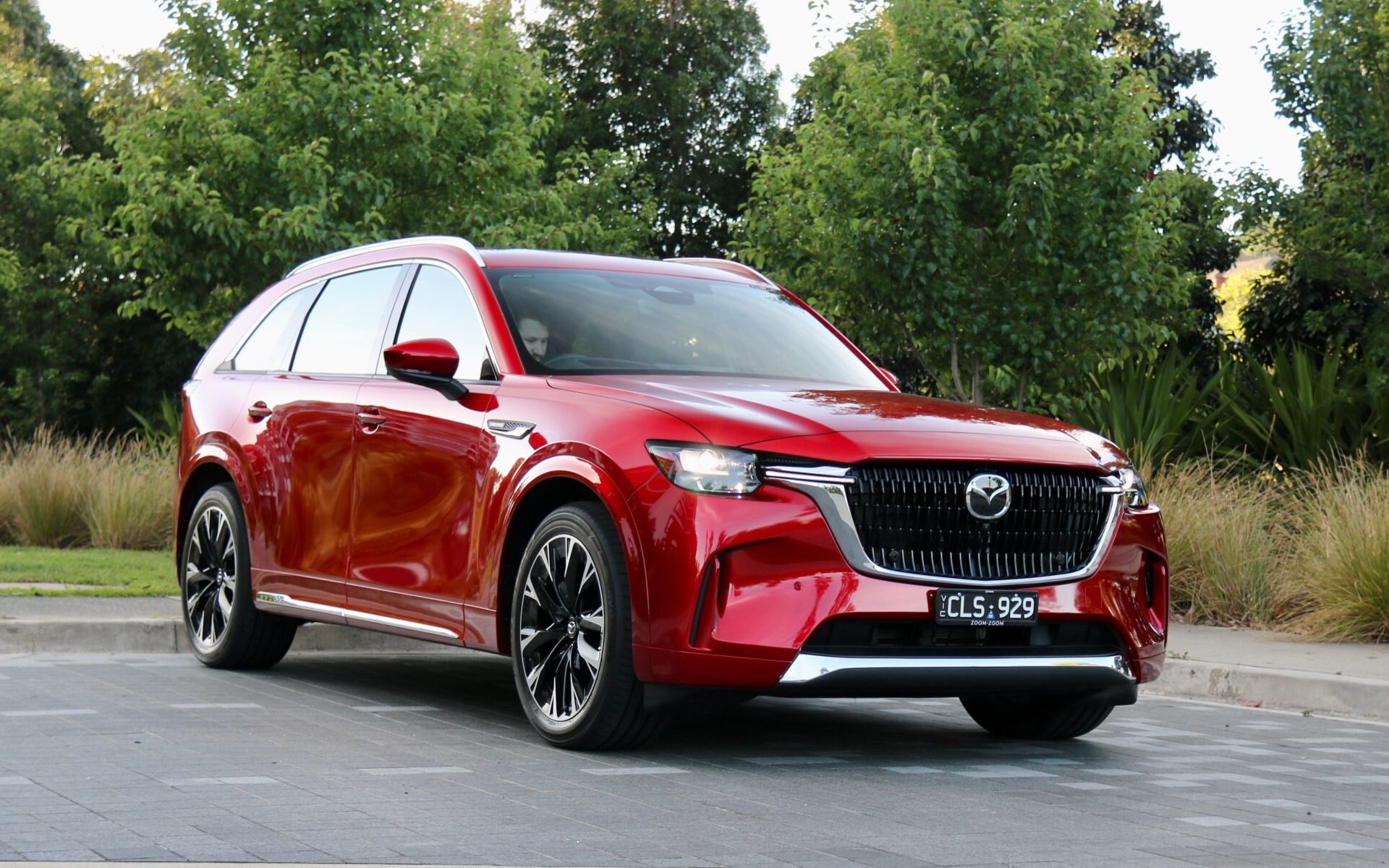JUNE 8: EX30 pricing announced for Australia
Just hours after the EX30’s global unveiling, Volvo has revealed Australian pricing and features.
Get all the details in our story linked below.
STORY CONTINUES: 2024 Volvo EX30 revealed!
“We know that price and cost of ownership is still one of the biggest challenges when people consider switching to an electric car.”
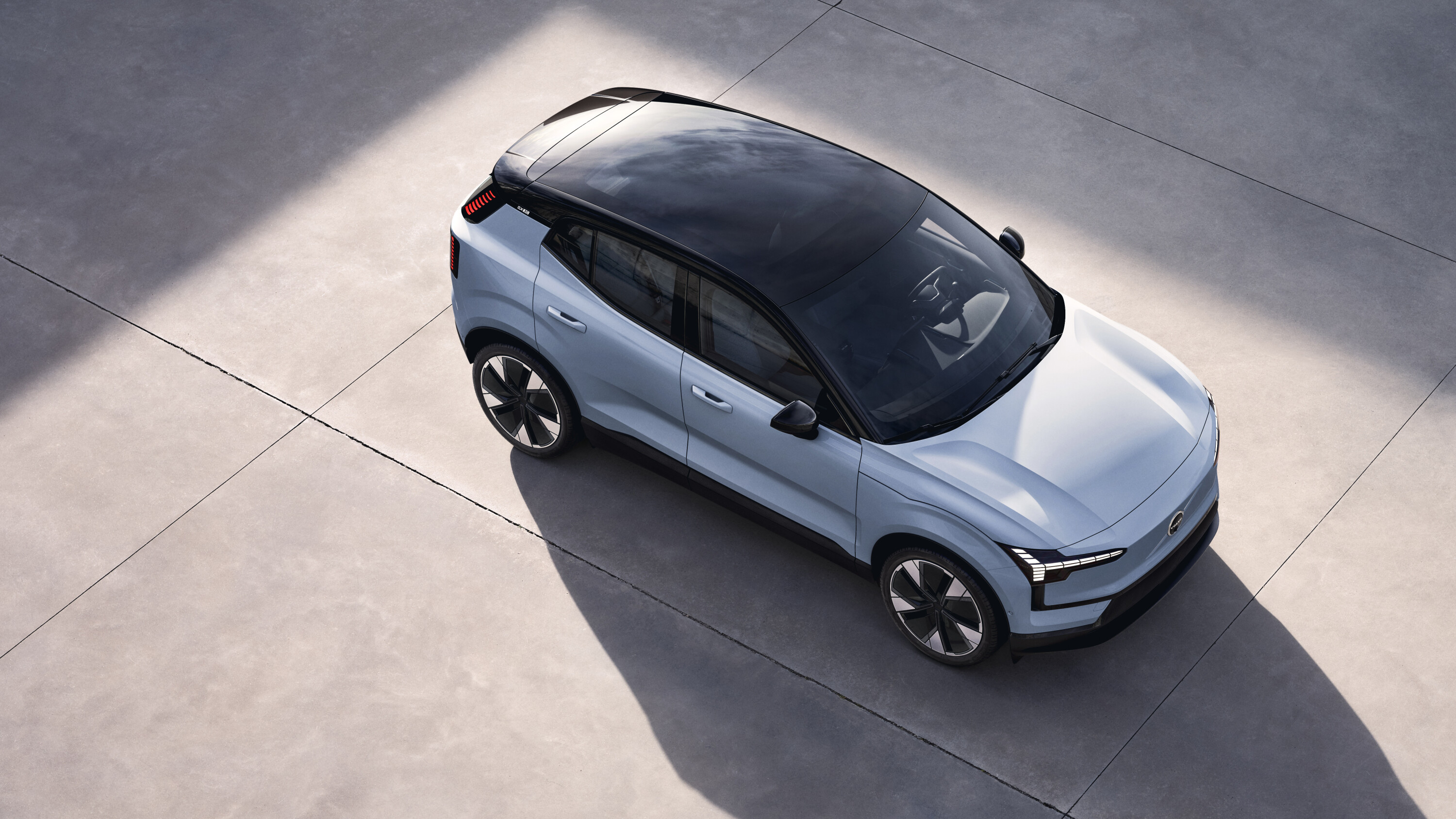
This is the Volvo EX30. One of the company’s smallest-ever cars – yet, in its own words, one of its biggest opportunities.
Volvo’s aiming for half its global sales volumes to be EVs by 2025. Just one year later, its entire Australian offering will take power purely from a plug. The EX30 will be a major player in both stories.
At 4.2m long, it’s not much much bigger than a Nissan Juke, while pricing is set to be extremely competitive in the electric SUV sector – its UK figures converting to an entry point below $60,000 on our shores. Volvo says prices sit as close to an internal combustion equivalent as possible.
“We know that price and cost of ownership is still one of the biggest challenges when people consider switching to an electric car,” says chief exec Jim Rowan, adding that the EX30 takes electric mobility to “a much broader audience”.
Volvo EX30 battery, driving range, power and performance
Its size and pricing may be as slim as possible, but the EX30’s performance is anything but.
Things kick off with the 200kW/343Nm, rear-driven EX30 Single Motor. This comes in standard (51kWh battery, 344km range) and Extended Range (69kWh, 480km) versions, with a peak 0-100km/h time of 5.3sec.
The 69kWh cell is your only option should you opt for the EX30 Twin Motor Performance. It’s all-wheel drive and boasts 315kW/543Nm outputs for 460km of range and a startling 3.6sec 0-100km/h figure – Volvo’s quickest ever. Yep, this really is no baby.
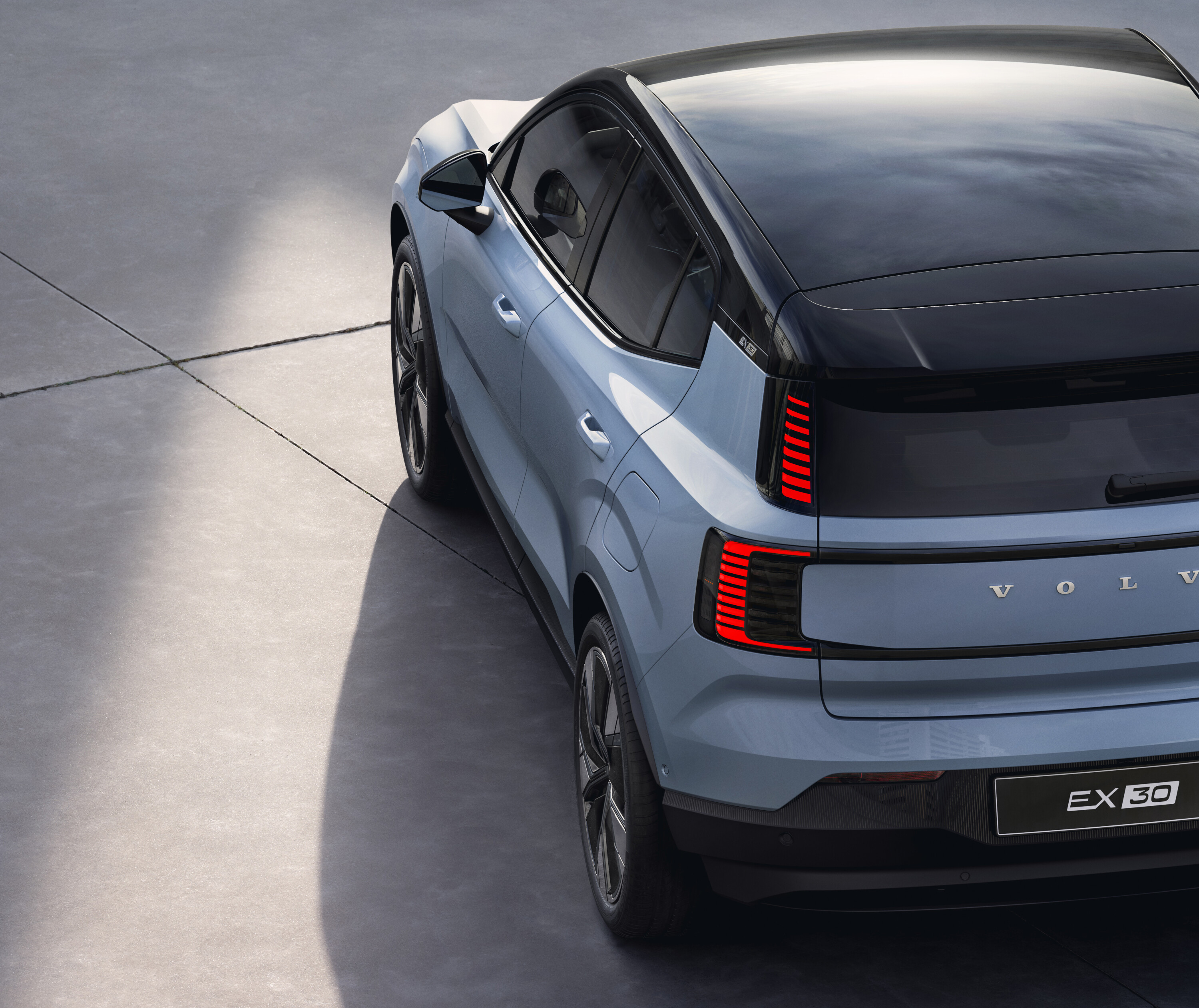
The smaller battery offers up to 134kW charging, the larger claiming 153kW, and each can zip from 10 to 80 per cent in under 30 minutes.
You can charge right up to 100 per cent on AC power in under 12 hours.
Preliminary consumption figures are quoted between 6.0 and 6.4km per kWh depending on powertrain – the Single Motor Extended Range is most efficient.
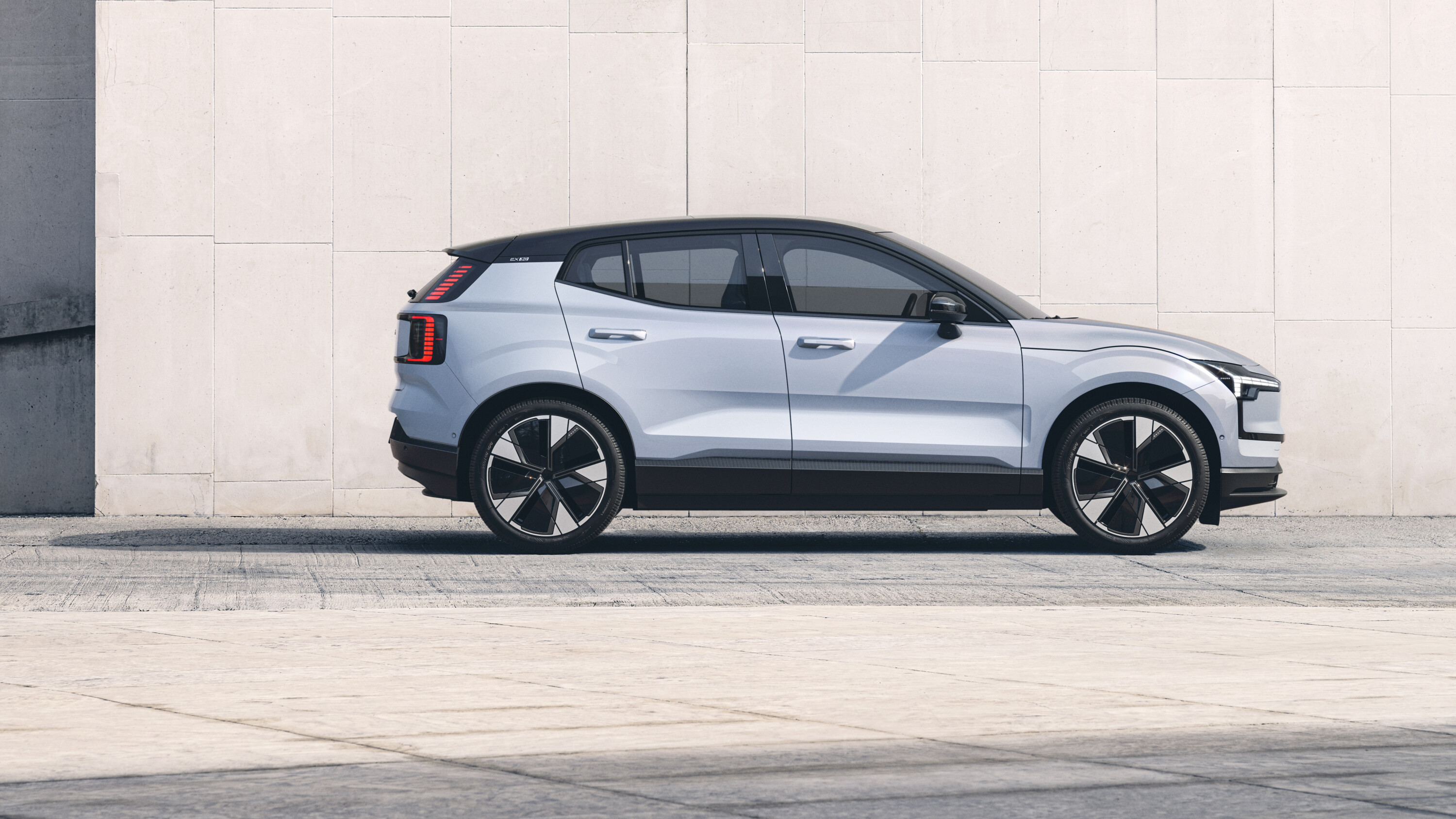
It’s the EX30’s overall efficiency performance that Volvo is especially proud of.
It claims the Swedes’ smallest CO2 footprint yet – as you might rightly expect – and contains 25% recycled aluminium, among other boasts.
Its four interior design options include a dashboard using denim from upcycled jeans. Let’s hope they’ve been washed…
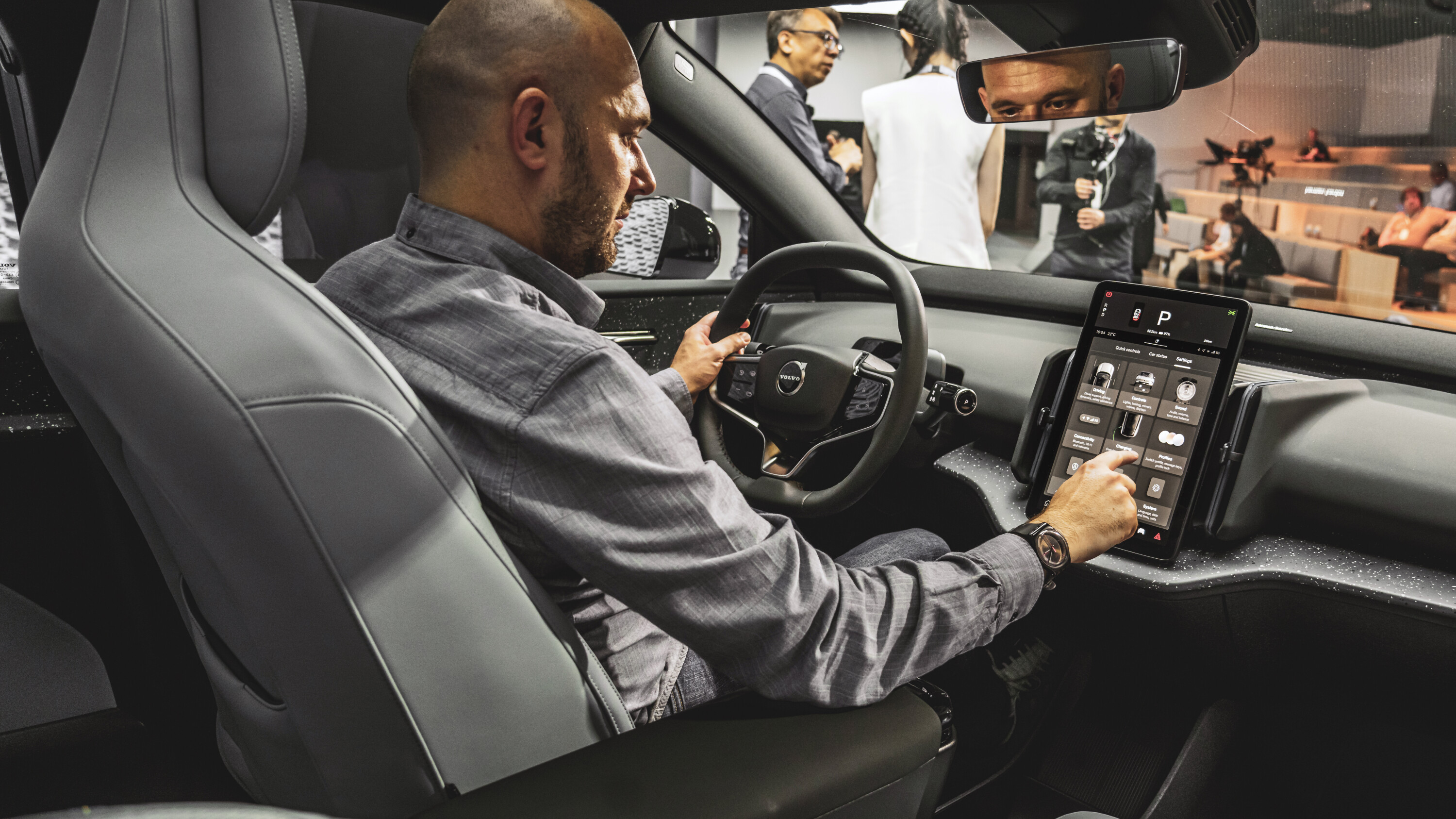
EX30 design and features
A 12.3-inch portrait touchscreen dominates inside, but there are lots of cool design flourishes to lap up around it.
The cabin aims to maximise the EX30’s dinky footprint by using a centralised soundbar rather than door speakers, while the traditional glovebox has been moved to the middle, too.
More space for the front passenger’s legs, easier access for the driver. Why has no one thought of that sooner?
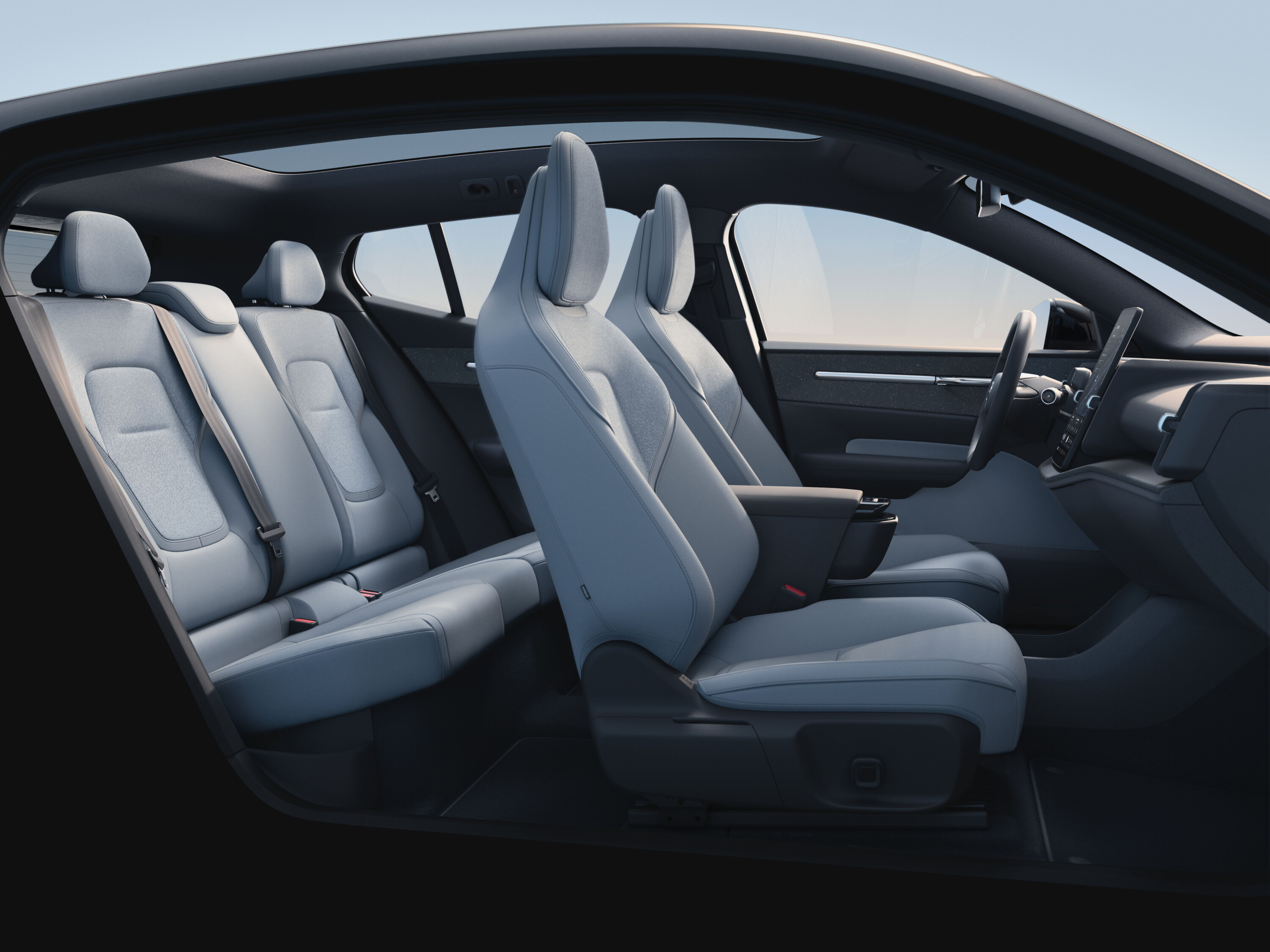
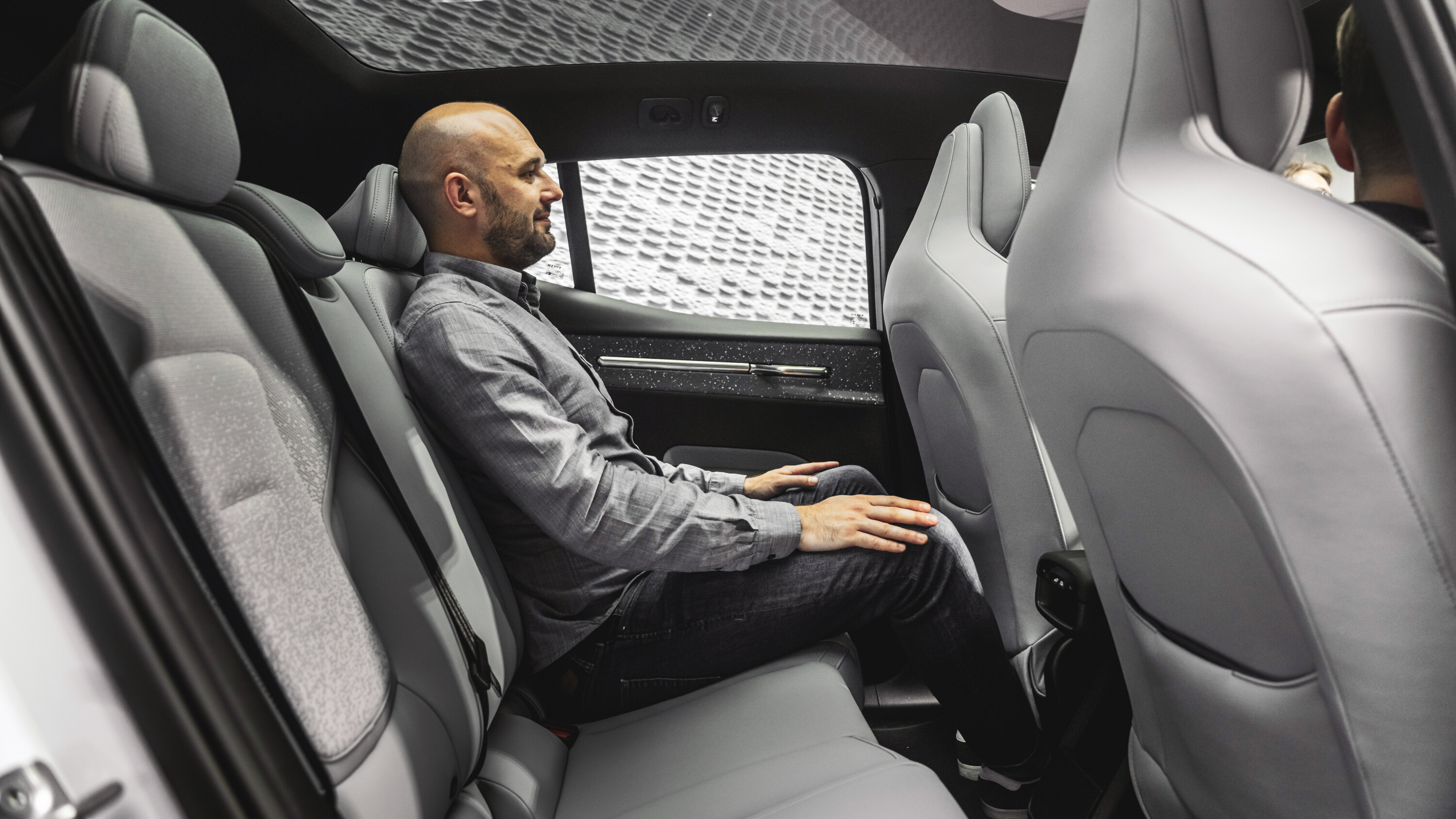
It’s a neat thing to look at on the outside, too, Volvo’s design team staying mindful of the company’s more notable cars.
Echoing the EX90, there are slim, vertical rear lights to nod back to 850s and V70s of old. Worried it’s all too sleek? There’ll be an EX30 Cross Country, too, offering a more rugged aesthetic.
It sits atop Geely’s ‘Sustainable Experience Architecture’ platform, which you’ll find beneath a bunch of other cars, the Smart #1 (one of the EX30’s main rivals overseas) included. Perhaps we’ll see a small Polestar spun from it, too. (Probably not called Polestar 1, though…)
We’re told 70 per cent of EX30 customers will be new to Volvo, and for many of them it’ll be a second car that does comfortably under 50km a day. They’re also likely to be home charging.
Its lower entry point might just bring younger buyers into the Volvo fold, of course – that’ll certainly be the hope.
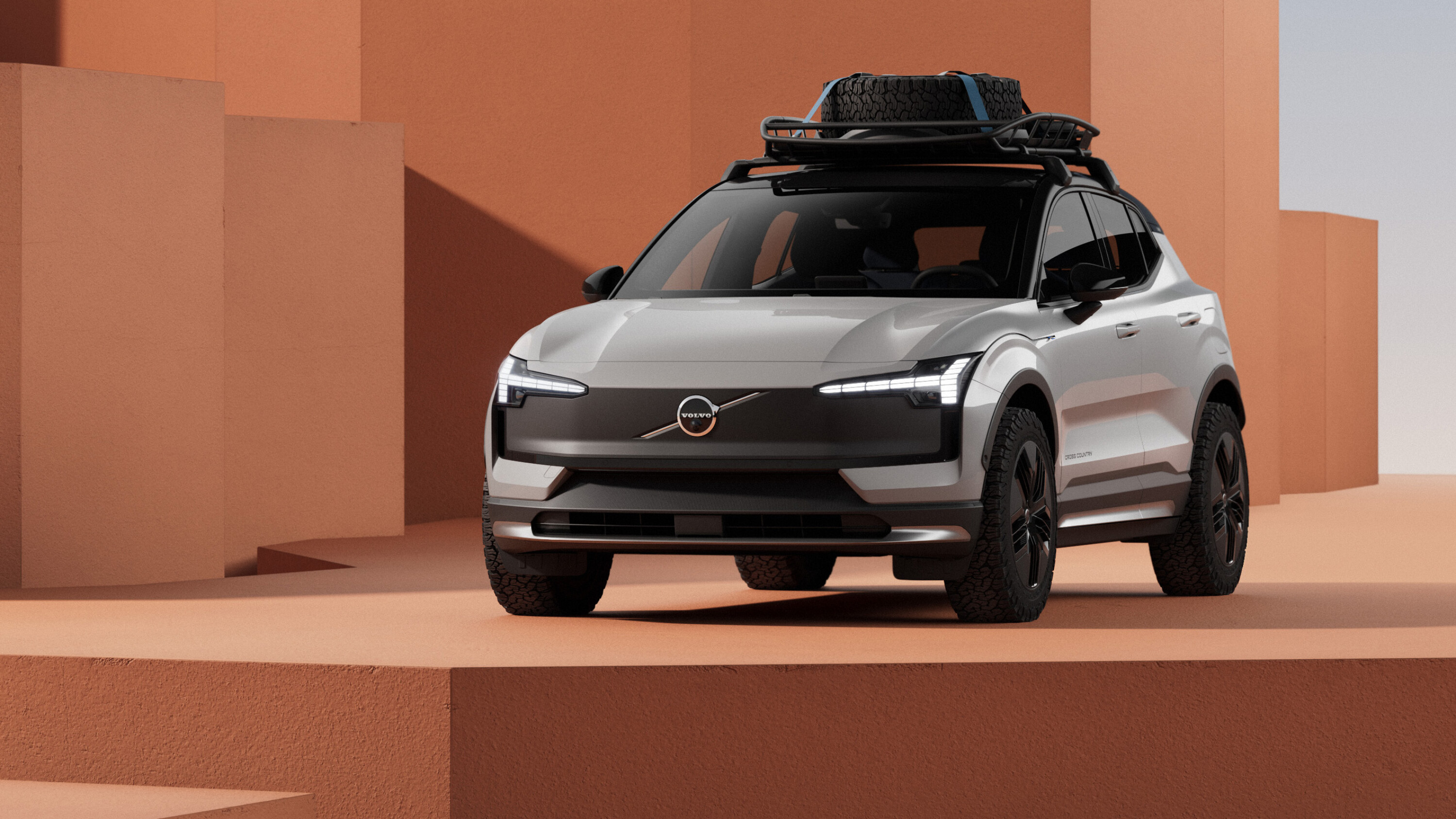
Some note title here
The Cross County doesn’t add much in the way of capability, but Volvo says it’ll come with more ground clearance (no numbers offered), 19-inch black wheels and the option of 18-inch wheels with bespoke tyres.
The range will open in Core trim, the spec of which is yet to be announced, followed by the Plus (Harman Kardon audio, heated seats and wheel, Pilot Assist safety tech) and Ultra (360-degree camera, auto parking, pano roof, 20in alloys and a more powerful 22kW on-board charger) sitting above.
In a move similar to other EV brands, Volvo will only offer the mid- and top-spec models at launch – hoping to capitalise on keen early adopters willing to spend more – with the Core model to join the range later.
One interesting safety function is a feature that helps to prevent ‘dooring’ accidents, alerting you if the system detects that you’re about to open your door into the path of a cyclist, scooter rider or runner.
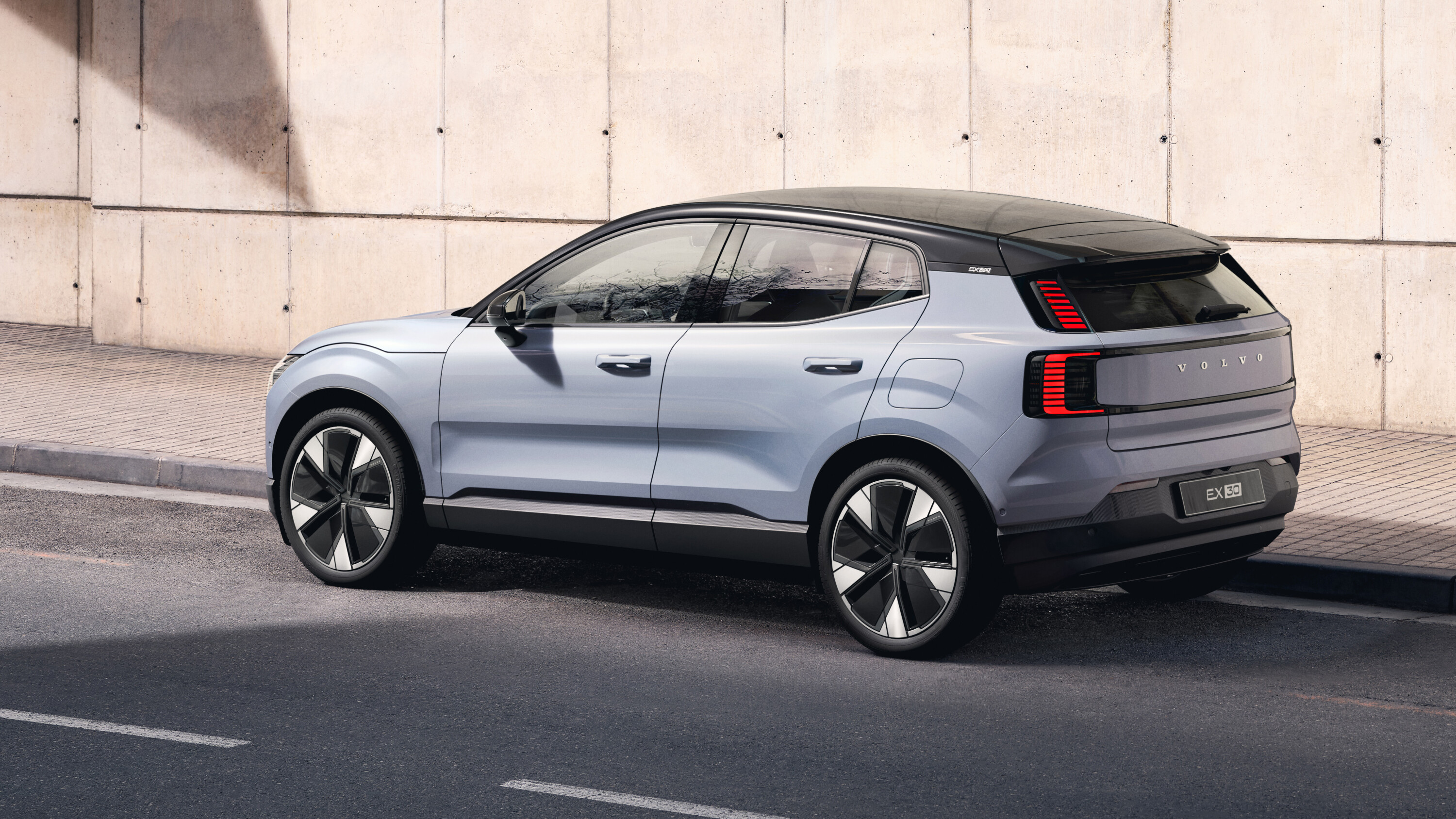
What about the XC40 EV?
If you’re wondering whether the EX30 replaces the XC40 Recharge Pure Electric, it does not.
While the latter rides on an older, petrol-based architecture, it is still plainly larger than the EX30 (apart from width) and still has a place in the line-up. See how the two compare below.
| Dimensions | Volvo EX30 | Volvo XC40 EV |
|---|---|---|
| Length | 4233mm | 4425mm |
| Width | 1940mm | 1863mm |
| Height | 1555mm | 1652mm |
| Wheelbase | 2650mm | 2702mm |
| Boot space | 318L rear seats up, 904L rear seats down | 418L rear seats up, 1373L rear seats down |
Some note title here
Volvo defines itself as an SUV brand now, but it will still make wagons. SEA platform cost scaling ensures it can continue with this critical ‘heritage’ design.
This scale also allows the EX30 to be so affordable.
Volvo says it’s exclusively a family car brand now, rather than a performance car brand. Yep, 3.6sec to 100km/h is for ‘safety’. Polestar does performance cars.
The EX30 is 15% recycled material. The target is 25% by 2025, and ‘near 100’ is theoretically possible.
A shareable smartphone digital key is part of the sustainability push. The car is used more of the time if it’s shareable – thus it better justifies its production. Interesting!
The infotainment UX is based around everything being ‘glanceable’ and they’ve no qualms about shoving the climate control and speedometer in the central screen. Their tests show customers adjust fine. (As Tesla can no doubt attest.)
Australia is pioneering a bit by going all-EV first, but the global strategy boss is delighted when markets volunteer to do that. Every market will go sooner than 2030 if they can and the market is right.
What will the EX30 cost in Australia?
Here’s the good news: Australian details have been revealed already. The line-up will start from $59,990 when it arrives in the last quarter of 2023.
Get all the details at our story linked below.
More EV stories to help you choose the best car for your needs
- ? EV news, reviews, advice & guides
- ❓ Short & sweet: Your EV questions answered
- ⚡ New EVs: Everything coming to Australia
- ? Australia’s EVs with the longest driving range
- ⚖️ Best-value EVs by driving range
- ? How much do EVs cost in Australia?
- ? How much more expensive are EVs?
- ⚖️ Number crunching: Is it time to switch to an EV?
- ♻ Should you buy a used EV?
- ?️ Are EVs more expensive to insure?
- ? Costs compared: Charging an EV vs fueling a car
- ? EV charging guide
- ?? EV servicing explained
- ? EV battery types explained
- ? When do EV batteries need replacing?
- ? Hydrogen v EVs: What’s best for Oz?
- ? How sustainable are EVs, really?
MORE advice stories to help you with buying and owning a car
We recommend
-
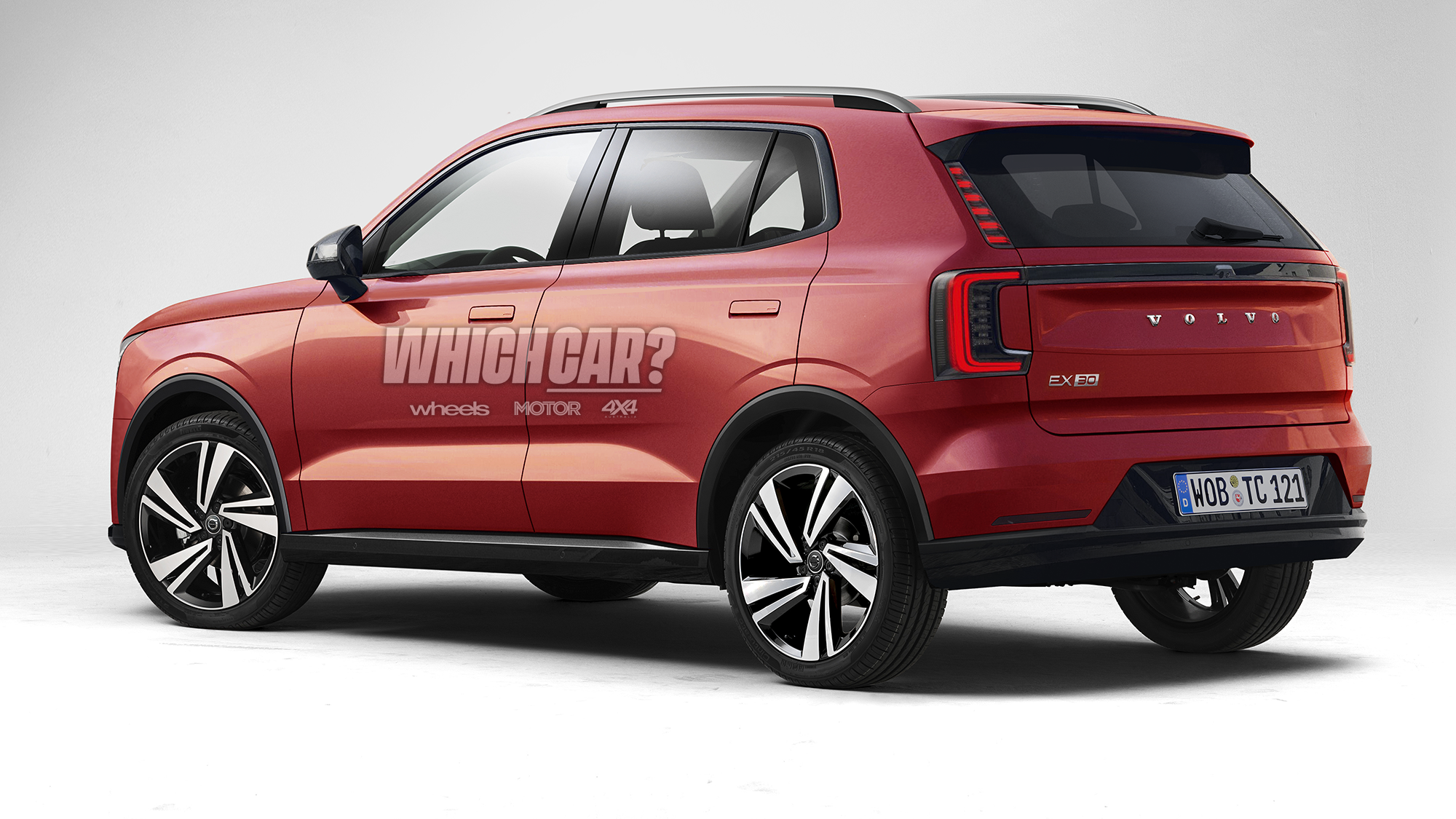 News
NewsVolvo EX30 set for June 15 reveal; will “talk to a completely different demographic”
Younger buyers are the target for Volvo’s fresh small SUV which will launch locally later this year
-
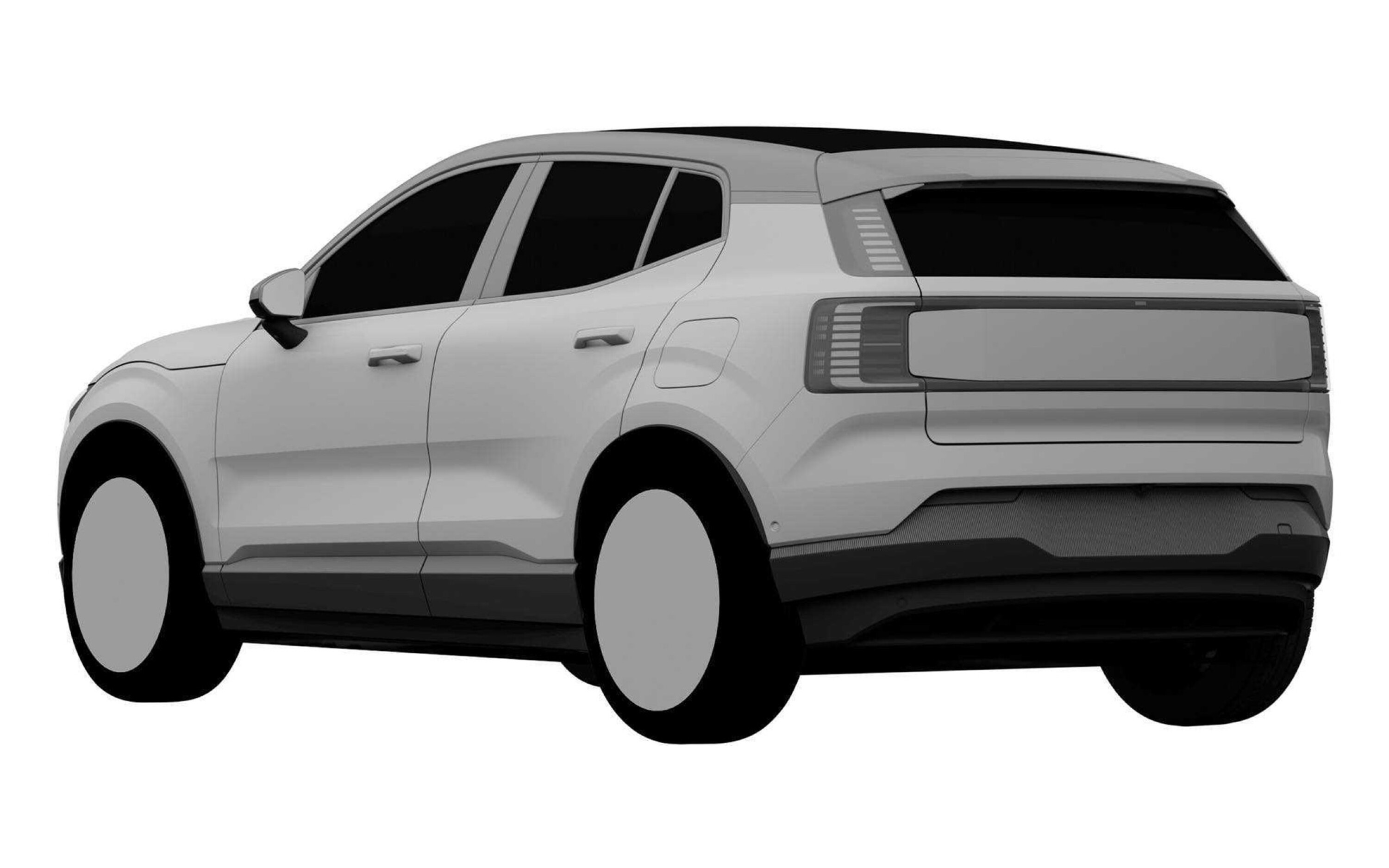 News
News2024 Volvo EX30 rendered and revealed in patent images
As the Volvo EX30 edges closer to its unveiling next month, patent images have revealed the car's proportions and what to expect
-
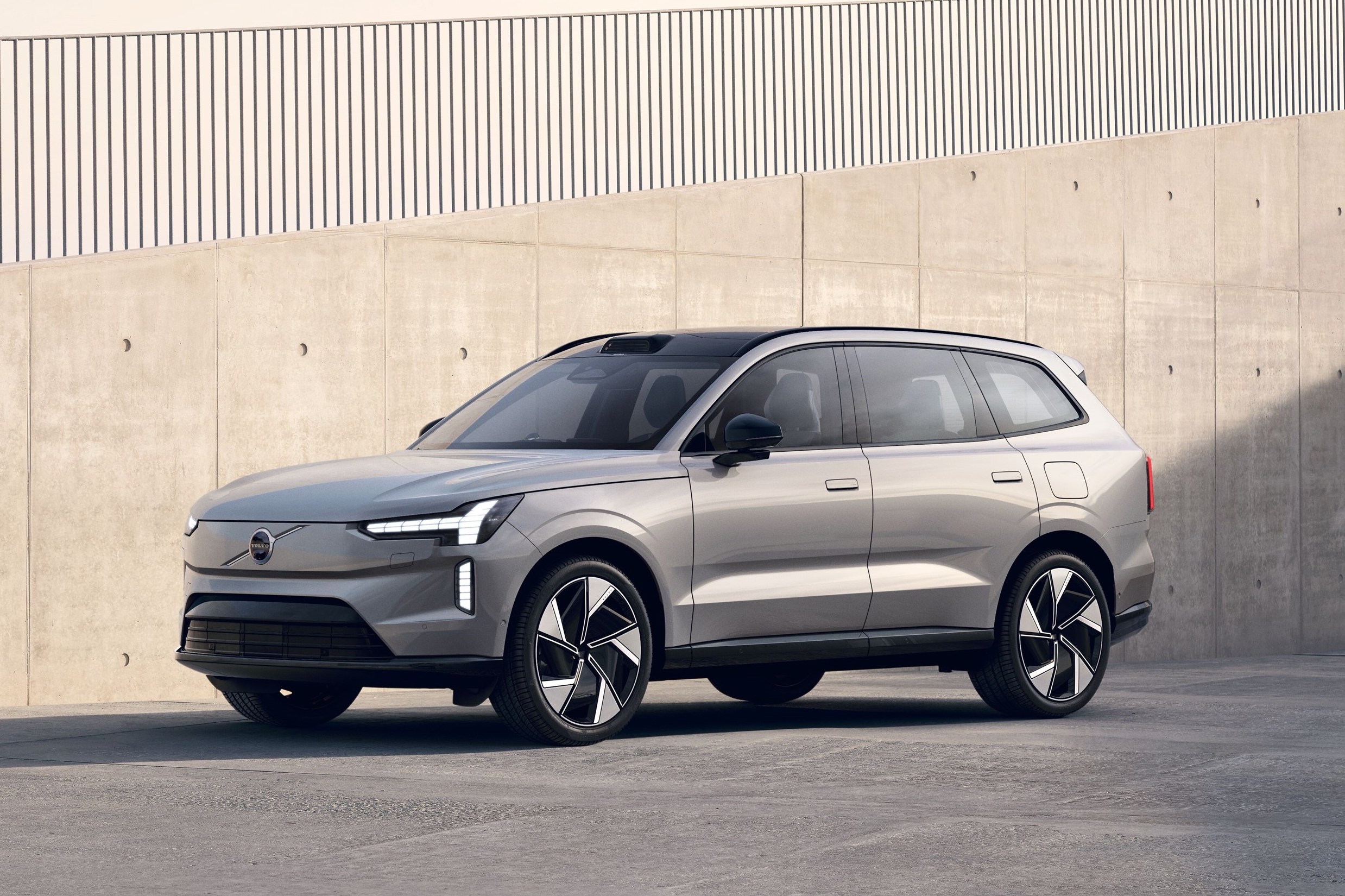 News
News2024 Volvo EX90 electric SUV revealed
Volvo has revealed the EX90, an all-electric alternative to the flagship XC90 offering self-driving capability and powerful dual-motor all-wheel drive

